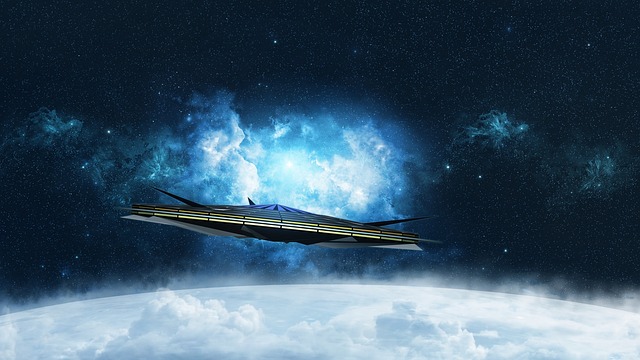
Space is the ultimate destination. And it’s been 30 years since that fateful moon walk which, sadly (and maybe disappointingly), has yet to be repeated. We’ve been hearing and constantly talking about going to Mars. But until now, it’s still just talk, though there are concrete plans on the way.
To make the trip to Mars (or other planets or stars) a reality, we have to develop the needed technology that can cut travel time significantly. And that requires an effective propulsion system. There are a few experimental systems in the works. But whether these systems will eventually be built and used on manned spacecraft remains to be seen.
Antimatter
Antimatter is made of antiparticles and is known to have the highest energy density among any of the known substances. If it can be used as fuel, it can potentially provide the most efficient propulsion system, capable of converting up to 75% of its mass into thrust energy.
According to the NASA Institute for Advanced Concepts (NIAC), ten thousandths of a gram of antimatter will be sufficient enough to send a spacecraft to Mars in just 45 days. As infinitesimal as that amount is, however, creating it is the main problem.
Right now, antimatter can only be created using particle accelerators, and the amount created is far too small to be usable. If we can somehow find a way to create more, then maybe an antimatter engine can be built in due time.
Fusion
Fusion attempts to replicate the sun’s power by heating fuel to super-intense temperatures until atomic nuclei fuse and produce more energy. Fusion power can be achieved in two ways — continuous fusion and pulsed fusion.
Continuous fusion is dependent on output from a fusion reactor. It’s something that scientists have been attempting to develop for decades but up to now have remained unsuccessful.
Pulsed fusion involves regulated or controlled detonation of a small fusion bomb to create thrust. Pulsed fusion is more feasible, but ironically, it is more unacceptable because detonating a fusion bomb, even if it’s a controlled process, will likely violate nuclear test bans.
Ion Drive
The ion drive thruster works by ionizing (giving a positive or negative charge) an unreactive fuel molecule, then using an electric field to accelerate it from behind. While the thrust generated is low — meaning the engine acceleration is slow — an ion engine is ideal for long-range missions because it can theoretically deliver thrust that’s 10 times more than what conventional fuel can provide.
This technology has already been used, most notably by the Dawn spaceprobe which is presently orbiting around dwarf planet Ceres. NASA is presently working on new systems such as the NASA Evolutionary Xenon Thruster (NEXT) and the Annular Engine.
Photonic Propulsion
In contrast with conventional propulsion methods — firing propellant in the opposite direction that a spacecraft wants to go — photonic propulsion will make use of an array of lasers that will be fired at a spacecraft to send it into space. This means there’s no need for fuel that contributes added weight. And because the spacecraft is lighter, it can accelerate much faster with less friction, and reach higher speeds than previously possible.
Theoretically, this technology will allow a spacecraft to reach 1/4 the speed of light in only a matter of minutes, then travel at nearly 174.3 million miles per hour. At this rate, it can supposedly reach Mars in as little as 30 minutes.
The technology is being developed by University of California Santa Barbara scientists led by Professor Phillip Lubin.
Plasma
Similar with the ion drive, but with a slight twist. Instead of using nonreactive fuel, electrical and magnetic currents are used to accelerate ions (charged particles) in plasma to produce thrust.
The most powerful plasma rocket prototype is currently being developed by the Ad Astra Rocket Company in Texas. It’s known as the Variable Specific Impulse Magnetoplasma Rocket (VASIMR) and will theoretically be able to send a spacecraft to Mars in as little as 39 days.
Solar Sails
A solar sail works by catching photons (particles of light) and having these photons push the sail to propel a craft forward. Ideally, a spacecraft with a solar sail that’s big enough can catch enormous amounts of photons, enough to push a craft at amazing speeds without the need for fuel.
The feasibility of this concept has already been proven in 2010 by Japan’s Interplanetary Kite-craft Accelerated by Radiation Of the Sun (IKAROS) project, and last year by the LightSail project.
The challenge with solar sails is that as it moves farther away from the sun, the weaker its thrust becomes. This basically limits its use to cosmic destinations that are not too distant from the sun.
Different technologies and different capabilities all directed towards one goal – to bring us to space. Let’s sit back and observe while the race to build the best propulsion system rages on.
Disclaimer: This page contains affiliate links. If you choose to make a purchase after clicking a link, we may receive a commission at no additional cost to you. Thank you for your support!




They forgot the EM drive that was recently tested.
The problem isn’t propulsion, but rather the fact we are a composite organism and, as such, are exquisitely tuned to and for the Earth’s ecology. That ecology cannot be taken with us nor can we be long separated from it. If you want to run a simulation of the ecology of a spacecraft after forty years of interstellar travel, try loading up your refrigerator and then unplugging it. Come back in forty days and that will be a reasonable facsimile of the result.